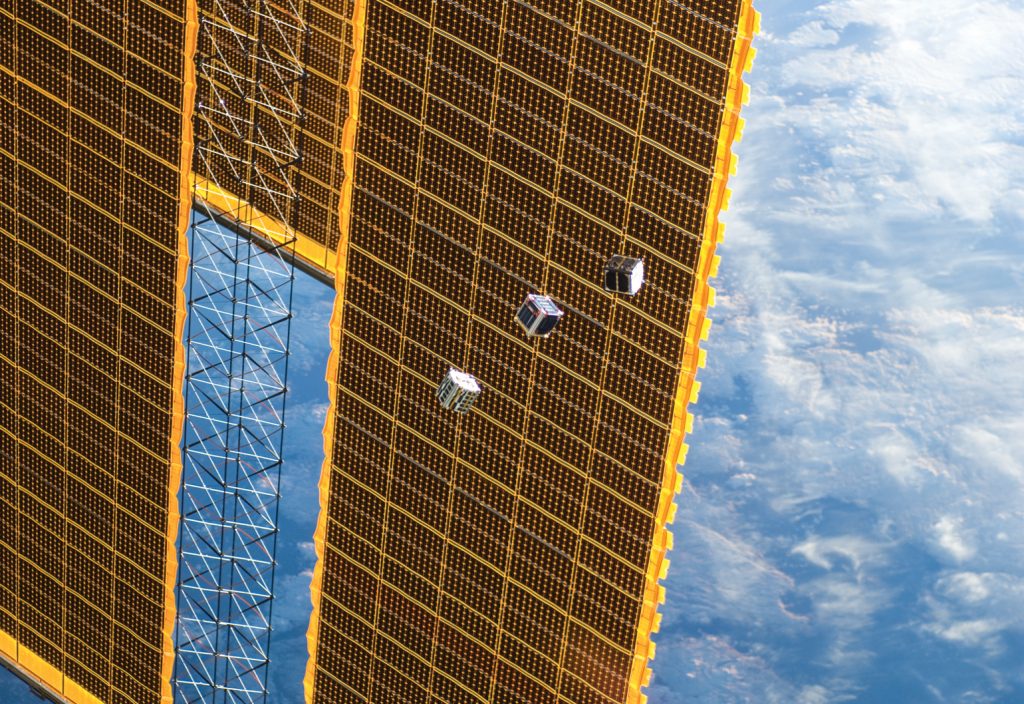For much of history, space exploration has been reserved for global superpowers with big budgets. But that’s all changing as technology opens new avenues for participation.
Getting into space is challenging and has historically been best achieved when a ‘whole of nation’ approach to space technology is taken. Many governments and space-related industries however, have traditionally been hampered through inadequate technologies or policies to sustain a space industry. But that is all changing fast.
Governments increasingly witness the benefits of space exploration, and new industries are being born that, through their innovative design and engineering practices, come at the space problem from an entirely fresh angle.
Miniaturised systems that take advantage of new technologies, for example, mean satellites that were once large and bespoke (bus sized) can now be built as a system of smaller units (milk container sized).
In order to earn their place in the burgeoning Australian space industry, engineers might benefit from a broader understanding of space, and particularly the elements that contribute to space power, said Wing Commander Darin Lovett, an Air Combat Officer in the Royal Australian Air Force.
Space influences both soft power and hard power, he said. Soft power has a lot to do with the power of attraction, of economic and cultural influence.
“Hard power is military and economic power, and often relates to the use of force,” said Lovett, who is also the RAAF’s Chief of Air Force fellow assigned to UNSW Canberra.
“In a historical context, we’ve long appreciated maritime, land and air power. A sophisticated understanding of all the elements of space power is needed for today.”
For the first few decades, space was largely a two-horse race between the US and USSR. Now more than 70 countries play in the arena, meaning the power balance is shared more equitably. But with more nations joining the race to space, a unique problem arises: there’s only so much space in space.
There is now an enormous amount of debris, from tiny chips of paint to entire satellites, orbiting earth at around 20,000 km/hr. In 2009, a Russian Cosmos satellite hit an American Iridium satellite, destroying both and sending more debris into orbit.

One more problem related to overcrowding in space is a lack of communication spectrum.
“Electromagnetic spectrum is finite and as we beam more data up and down we are witnessing greater interference,” Lovett said.
Who owns space?
The initial model saw the USA and USSR dominating power in space. But as with everything else connected with technology, that model has been well and truly disrupted.
“The two-power race gave those nations great capabilities and they still own a lot of the ‘big stuff’ in space,” Lovett said.
“But disruption is occurring in the shape of smaller satellites using different technologies developed by smaller countries.”
However, it’s important to remember that space engineering isn’t all about objects sent into orbit. There are many on-ground support pieces such as base stations, power provision, towers and dishes. Solutions are constantly required for challenges around issues such as payload monitoring, battery advancement, solar flare protection, etc. And finally, wrapped around all of that is the piece that interests Lovett: policy.
“It doesn’t sound as appealing, but engineers need to understand that they are working in a complex global environment,” he said.
“They need to understand policy and the approvals needed for launch and access. What are the levers of government to push and pull that will lead to a vibrant national industry?”
Building space expertise
The challenges in space engineering are not necessarily new. In fact, the biggest engineering challenge remains the same as it was 50 years ago – survival. The engineered item must survive the first seven minutes of launch then must face the rigours of space.
“You’ve got to accelerate an object up to 27,000 kilometres an hour – seven times the speed of a bullet – through the atmosphere into orbit,” Lovett said.
“Then, once it’s up there and once it has assembled itself, the payload has to survive.”
In some ways, though, survival itself has been disrupted. Where absolute reliability was once expected of expensive items sent into space, failure is now an option. By sending up larger numbers of cheaper and smaller satellites, resilience is increased. And with miniaturisation of computers and other types of tech, sizes of payloads are dramatically reduced.
SpaceX engineers went to commercial manufacturers not involved in space for materials and ideas. They use off-the-shelf computers, build in-house parts and recycle parts.
A strong example of miniaturisation is in a $10 million contract from the RAAF, recently awarded to UNSW Canberra, to build three tiny satellites intended to enhance Australia’s defence capabilities.
The cubesat spacecraft, which weigh less than 10 kilograms each and are smaller than two loaves of bread, will be sent into low-Earth orbit in the next 24 months and will use cameras and radios for maritime surveillance.
Other companies plan to surround Earth with small satellites containing video cameras and provide 24-hour coverage of the entire surface of the planet.
“Imagine somebody explodes a car bomb in front of a building,” Lovett said.
“You could take this footage and look back over six months to see every location that the car visited during that period. You’ve got a global view of everything that has happened.”
Getting into space
How much do engineers really need to understand about policy and politics before launching their careers into space? It depends on their specialisation, level and aspirations, Lovett said.
“You might be employed as the world’s best rocket propulsion engineer, in which case you probably don’t need to know about space policy,” he said.
“But as you’re moving up in your career or moving towards bigger projects or management, you need to understand policy. Or if you’re in a small company where you’re doing everything, you’ll need to have a broad understanding of what makes things tick.”
[Main image: TechEdSat (left) and its companion cubesats drifting past the ISS solar arrays.]
